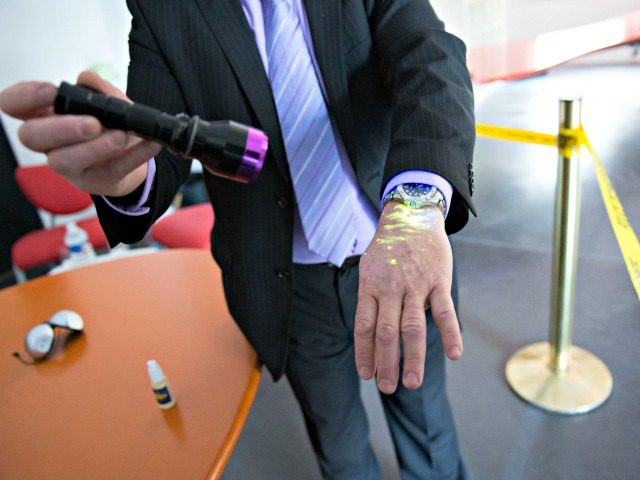A Columbia University researcher this week said new ultraviolet technology he helped develop is a “game changer” that has shown promise for killing the novel coronavirus in indoor places without harming human skin.
The findings echo other studies that found UV technology could potentially sterilize the novel coronavirus on surfaces and the air. This week, the media and their Democrat allies lambasted U.S. President Donald Trump for suggesting that health officials could use UV light to treat coronavirus.
David Brenner, a professor of radiation biophysics and director of Columbia University’s Center for Radiological Research, helped develop technology that uses lamps to emit a wavelength of ultraviolet light known as far-UVC the could be lethal to the novel coronavirus.
He believes the technology is showing promise for hindering the person-to-person spread of the novel coronavirus illness (COVID-19) in indoor settings.
“Far-UVC light has the potential to be a ‘game-changer,'” Brenner said, Columbia News reported on Tuesday. “It can be safely used in occupied public spaces, and it kills pathogens in the air before we can breathe them in.” He added:
Our system is a low-cost, safe solution to eradicating airborne viruses minutes after they’ve been breathed, coughed or sneezed into the air. Not only does it have the potential to prevent the global spread of the virus that causes COVID-19, but also future novel viruses, as well as more familiar viruses like influenza and measles.
The far-UVC lamps, already in production by several companies, cost between $500 and $1000 each, the researcher noted, adding that the prices would likely drop once they are mass-produced. Brenner noted:
Far-UVC takes a fundamentally different tactic in the war against COVID-19. Most approaches focus on fighting the virus once it has gotten into the body. Far-UVC is one of the very few approaches that have the potential to prevent the spread of viruses before they enter the body.
So far, general commercial applications of far-UVC lamps appear limited.
Columbia University acknowledged that “ramping up” the manufacturing of the lamps “to large-scale production, as well as approval by the Food and Drug Administration [FDA] and Environmental Protection Agency [EPA, will take several months.”
While the new technology is lethal for coronavirus, it is reportedly safe for humans.
Columbia University reported:
[The new technology] uses lamps that emit continuous, low doses of a particular wavelength of ultraviolet light, known as far-UVC, which can kill viruses and bacteria without harming human skin, eyes, and other tissues, as is the problem with conventional UV light.
…
The research team’s experiments have shown far-UVC effective in eradicating two types of airborne seasonal coronaviruses (the ones that cause coughs and colds). The researchers are now testing the light against the SARS-CoV-2 [coronavirus] virus at Columbia in a biosafety laboratory, with encouraging results, Brenner said.
According to Brenner, people can use safe overhead far-UVC lamps in various indoor public spaces.
“The technology, which can be easily retrofitted into existing light fixtures, he said, could be deployed in hospitals and doctors’ offices as well as schools, shelters, airports, airplanes, and other transportation hubs,” Columbia reported.
“Scientists have known for decades that broad-spectrum, germicidal UV light has the capacity to kill microbes. Hospitals and laboratories often use UV light to sterilize tools and other equipment,” it added.
Other studies have shown that UV technology could successfully achieve near-complete sterilization of the novel coronavirus on surfaces and air.
Researchers at the University of California (UC) Santa Barbara “are developing ultraviolet LEDs that have the ability to decontaminate surfaces — and potentially air and water — that have come in contact with [coronavirus],” Science Daily reported on April 14.

COMMENTS
Please let us know if you're having issues with commenting.